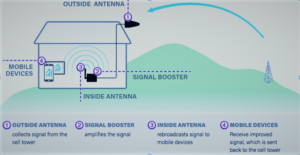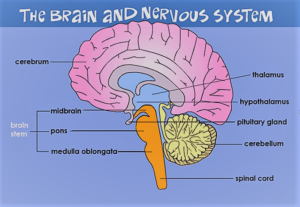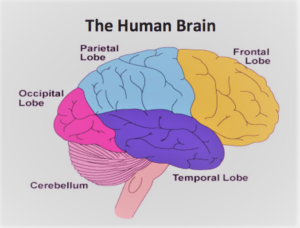Before jumping into the mystery of the affect of mobile usage on children, it becomes necessary to understand the mobiles and the brain separately. As they both are directly proportional to each other.
What are mobiles?
For the developing country like India, technology is playing a key role in helping to move developing countries toward sustainable growth. A mobile phone is a wireless handheld device that allows one to communicate to and fro. It also send text messages, in addition to other features. In 1973 it was created by Martin Cooper a Motorola researcher and executive. In seventies mobiles could only make and receive calls. But the modern mobile phones, however, are containing many smart features, like games, cameras, video players, internet and even navigational systems. They are called as smart phones, which was developed and created by IBM in 1995. Now it has become a necessity and has spread its usage like fire. It has become a friend of everyone from one day old infant onwards.
How it works?
Mobile phones work in similar to the other wireless devices. Signals are carried from one device to another via radio waves. The most interesting about mobile phone networks is their cellular design (Hence the terms “cellular network” and “cellular phone.”). A typical cellular network can be visualized as a mesh of hexagonal cells, as shown in below, with its own base station at the center.
Cell phones are equipped with atleast one radio antenna in order to transmit or receive radio signals. The electric signals are transformed through an antenna to the radio wave (transmitter) and vice versa (receiver). Some cell phones use one antenna as the transmitter and receiver while others, such as the iPhone 5 and modern smart phones, have multiple transmitting or receiving antennas.
In compliance to the cellular antenna, mobiles also have Wi-Fi, Bluetooth and/or GPS antennas.
Mobile phones transmit radio waves in all directions. The waves are absorbed and reflected by surrounding objects before they reach the nearest cell tower. If the phone is placed next to our head during a call, a major portion (over half in many cases) of the emitted energy is absorbed into our head and body. In this way, much of the cell phone’s EMF energy is lost and no longer available for communication.
After knowing the working of the mobile phones it will be very easy for us to understand the adverse affect of the mobile phones on human beings especially kids, who are very delicate and all the internal organs are developing much faster and in that scenario harmful radiation are hampering the development of child. The affect varies with the weak point of the child, so different children face different kind of problem.
Brain of human being:
It is very important to know about the various parts of the brain and their functions in the coordination of our body.
Our brain acts like a computer which controls all the functions of the body and the nervous system acts like a network which relays messages to all parts of the body.
Cerebrum is the largest part of the brain, which controls voluntary movement, speech, intelligence, memory, emotion, and sensory processing.
Midbrain behaves like a complex switchboard, allowing the brain to communicate with the rest of the nervous system.
Medulla Oblongata of the brain stem regulates the vital functions of the body, such as heartbeat and breathing.
Thalamus coordinates sensory messages, such as touch, received from the body.
Hypothalamus regulates functions like thirst, appetite, and sleep patterns, also the release of hormones from the pituitary gland.
Pituitary Gland produces hormones involved in regulating growth, puberty, metabolism, water and mineral balance, the body’s response to stress, and more.
Cerebellum helps coordinate and fine-tune movement and balance.
The brain is connected to spinal cord with nerves going to the rest of the body.
Frontal lobe, located behind the forehead, does complex thinking, like planning, imagining, making decisions, and reasoning.
The Parietal lobe helps in transferring messages related to touch, taste, and temperature.
Occipital lobe transfers light and other visual information from the eyes.
Cerebellum helps in coordinating movement and balance.
Temporal lobe processes hearing and is involved in memory recovery.
With this now it will be very easy to understand the affect of extensive mobile usage and the ill health effects. As already it has been made clear that these radio waves can easily transmit into our body.
In short we can say:
More mobile Usage=More signals= More radio waves=More exposure to radiations = More health problems=Varied diseases=Affects Body fitness
Adverse Affects of Long Mobile Usage:
As already we are aware children are growing up in a radio-frequency environment with more and more technological development. The radiations emitted by extensive mobile usage can have adverse effects on children.
Health Issues:
Various researchers have pointed out that just 2 minutes of the phone call can alter the electoral activity of the kid’s brain for up to an hour. The radio waves transmitted from the mobile usage deep into the brain, not just around the ear. This disturbs the brain activity which could impair children’s learning ability. Not only this it also creates many health related problems and behavioral problems. They have tremendous mood swings and also hampers the ability of learning in the classroom if they have used the phone during the break time.
Academics:
Teens are highly addicted to mobile phones and looking to them children are also following the same. They talk to their friends, play games, chat and always hang on their mobile phone all the time. Along with the academics query, many students make their daily trips to their school with their mobile phones. They chat on the phone during the break time and send messages during the classes. Finally they miss the lesson taught and fall behind the other students.
Inappropriate Behavior:
Mobile usage leads children to engage in improper behaviors. Transferring inappropriate text, messages and pictures is a growing problem with teens. The pictures go in the wrong hands and are misused, also giving access to the private photos. Children get in habit to access pornographic sites from their multimedia devices.
Inhibition of Brain Development
Smart phones screens can affect health of kids especially babies whose brains are still developing. Psychologists says the first three years of a child’s life are “the critical period” in brain development because what the child’s brain perceive during these years becomes the permanent base upon which all future learning relies. Receiving information from the real world around them helps babies to transmit via neural pathways will make their brains strong and healthy.
Harming Teens’ Brains
Though older kids don’t face the situation of intense brain development as babies, kids’ and adolescents ‘but brains continue to develop and can be harmed by too much usage of smart phones.
Brains of teenagers are very adaptable and keep switching rapidly between many activities such as texting and using social media, is associated with lower levels of brain matter in teens which is responsible for emotional processing and decision-making.
For interpreting emotions and for focusing on tasks another part of our brains is used which becomes active around 20s. This also gets harmed by long smart phone usage. This has been explained by Paul Atchley, a psychology professor at the University of Kansas, he said it is important to train that prefrontal cortex not to be easily distracted. But what we are seeing today is that young people are constantly getting distracted, and also less sensitive to the emotions of others.
No Friends:
Smart phones usage has also made difficulty in making friends. Brian Primack, Director of the Center for Research on Media, Technology and Health at the University of Pittsburgh warns that social interaction is becoming dangerous with excess mobile usage.
Diseases:
In the recent years, there has been a lot of assumption about the impact of cell phone radiation on our body. The mobile usage health hazards for children are as follows:
Cancer:
Children imbibe 60 percent or more of the radiation into the brain than adults. This is told by WHO. By using phones the radiation which is emitted ‘possibly carcinogenic to humans’. Brain’s thinner skin, tissues, and bones allow kids to absorb the radiation twice than the grown-ups. Developing nervous system makes them more susceptible to this ‘carcinogen’.
Tumors
There has been extensive research, for quite a long time, on the ground of understanding cell phone radiation effects on children. Since they are in a stage where their body is undergoing tremendous changes and growth, the effects of mobile radiation on them could be different from those on adults.
Children that have a tendency to use phones for extended periods of time, keeping them close to their ears, have shown a higher chance of developing non-malignant tumors, especially in the regions of the ear and the brain.
The radiation can have strange effects in the human body, sometimes directly affecting the nervous system, too. This has been classified by the World Health Organization as a “possible carcinogen” and carries a potential risk of cancer.
Depression in Kids
Indeed, heavy mobile usage is associated with higher rates of stress and depression in kids. One study conducted by the Center on Media and Child Health at the University of Alberta found that over the past three to five years, as smart phone use has spread, Almost 90% of teachers reported that the number of students with emotional challenges is increased; 86% of teachers report that the number of students with social challenges has gone up as well.
Between 2010 and 2016, the number of adolescents who experienced major depression grew by 60%, according to the US Department of Health and Human Services. Suicides have also increased significantly among kids ages 10 to 19 during that time. It was found that since 2010, teens who spend more time using smart phones and other technology are more likely to report having mental health problems than teens who spend less time with their devices.
On surveying it was found by Prof. Twenge that half a million adolescents across the United States were addicted to smart phone use and harmed themselves. If three or more hours are spent on mobile usage by the kids then they are more likely to suffer at least one suicide-related symptom such as feeling hopeless or thinking about suicide than kids who limit their smart phone and other device use to two hours a day or less. If used devices for five or more hours each day, nearly half reported experiencing at least one suicide related outcome.
Prof. Twenge has found. Kids who use social media every day are 13% more likely to have high levels of depressive symptoms than those who don’t. She found teens who did not use their smart phones some of the time and who spent the most time interacting face to face seemed to be the healthiest emotionally.
Steps taken to reduce mobile phone radiation exposure
It is suggested that mobile phones aren’t harmful, but long-term risks and consequences are harmful.
One can reduce exposure to RF radiation by:
- Selecting a mobile phone model that has a low specific absorption rate (SAR), which refers to the amount of RF radiation absorbed by body tissues
- Practice to use a landline phone if it is available.
- keeping short mobile phone calls
- using ear phones
- not carrying mobile phone close to body when it is switched on
- Protective devices or ‘shields’ can reduce exposure to RF
- Do not let children use the phone in areas where the signal strength is weak, as mobiles amplify their own radiation to get a good signal strength, which can be harmful to the child.





























